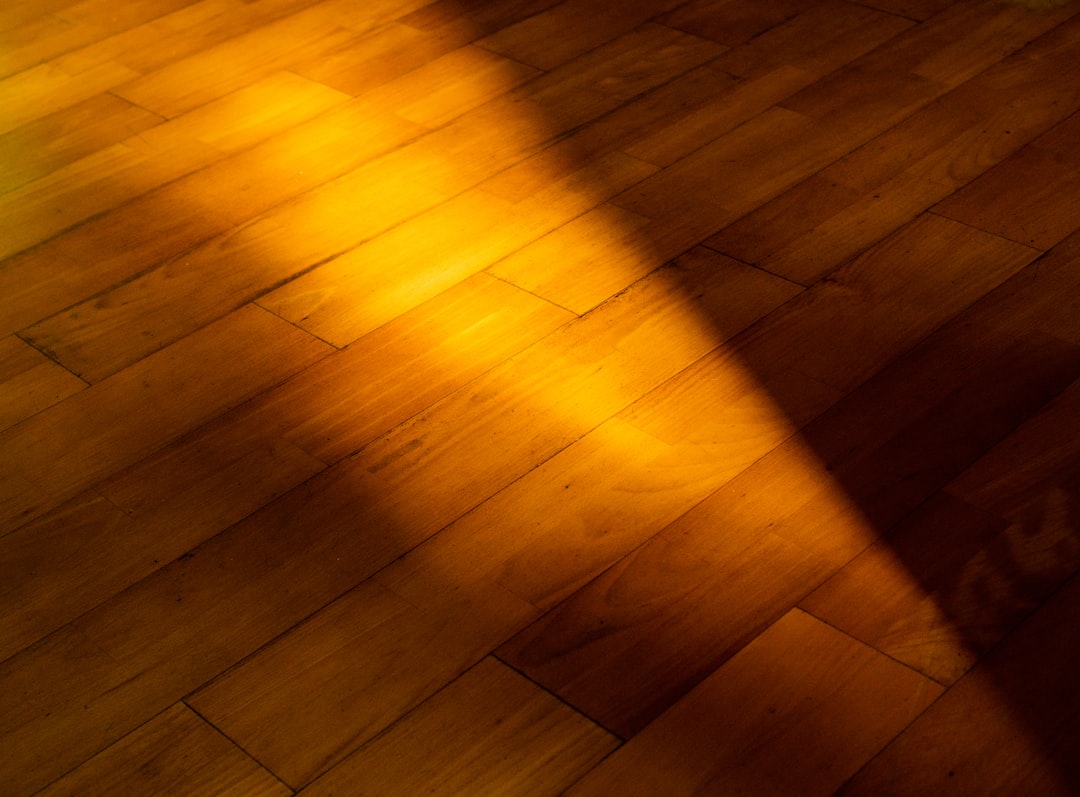Best way to clean and disinfect hardwood floors: Safe 2025
Why Proper Hardwood Floor Care Matters More Than You Think
The best way to clean and disinfect hardwood floors involves two distinct processes: cleaning to remove dirt and disinfecting to kill germs. Using the wrong method for either can permanently damage your beautiful wood floors.
Quick Answer: Best Way to Clean and Disinfect Hardwood Floors
- Clean First: Sweep/vacuum, then damp mop with pH-neutral cleaner
- Disinfect Carefully: Use wood-safe disinfectant, apply to cloth (not floor)
- Follow Dwell Time: Let disinfectant sit as directed on label
- Dry Immediately: Wipe away excess moisture to prevent damage
- Avoid: Bleach, ammonia, steam mops, and excessive water
While CDC studies show disinfecting floors isn’t significantly more helpful than simply cleaning them for general household maintenance, proper disinfection becomes essential when someone is sick or to address specific contamination.
The challenge lies in balancing effectiveness with protection. Hardwood floors are vulnerable—they can warp from excess moisture, lose their finish from harsh chemicals, and develop permanent stains from improper products. Understanding your floor’s finish and choosing the right products makes all the difference.
As Ramy Saber, a Civil Engineer and founder of الأميرة سندريلا A&C, I’ve spent years helping clients maintain their flooring investments. My experience has taught me that knowing the best way to clean and disinfect hardwood floors is essential for preserving both beauty and value.
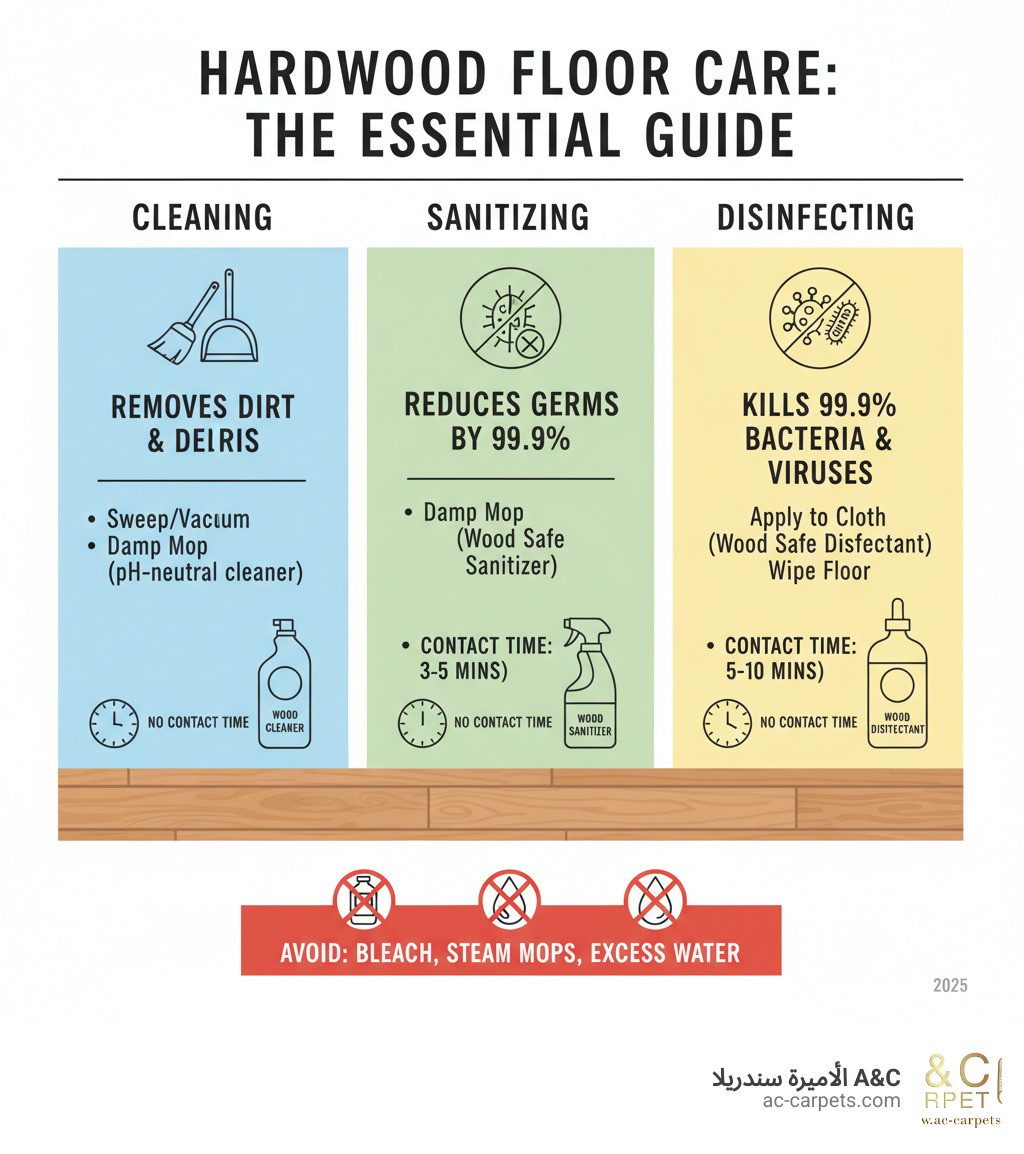
Cleaning vs. Disinfecting: What Your Hardwood Floors Really Need
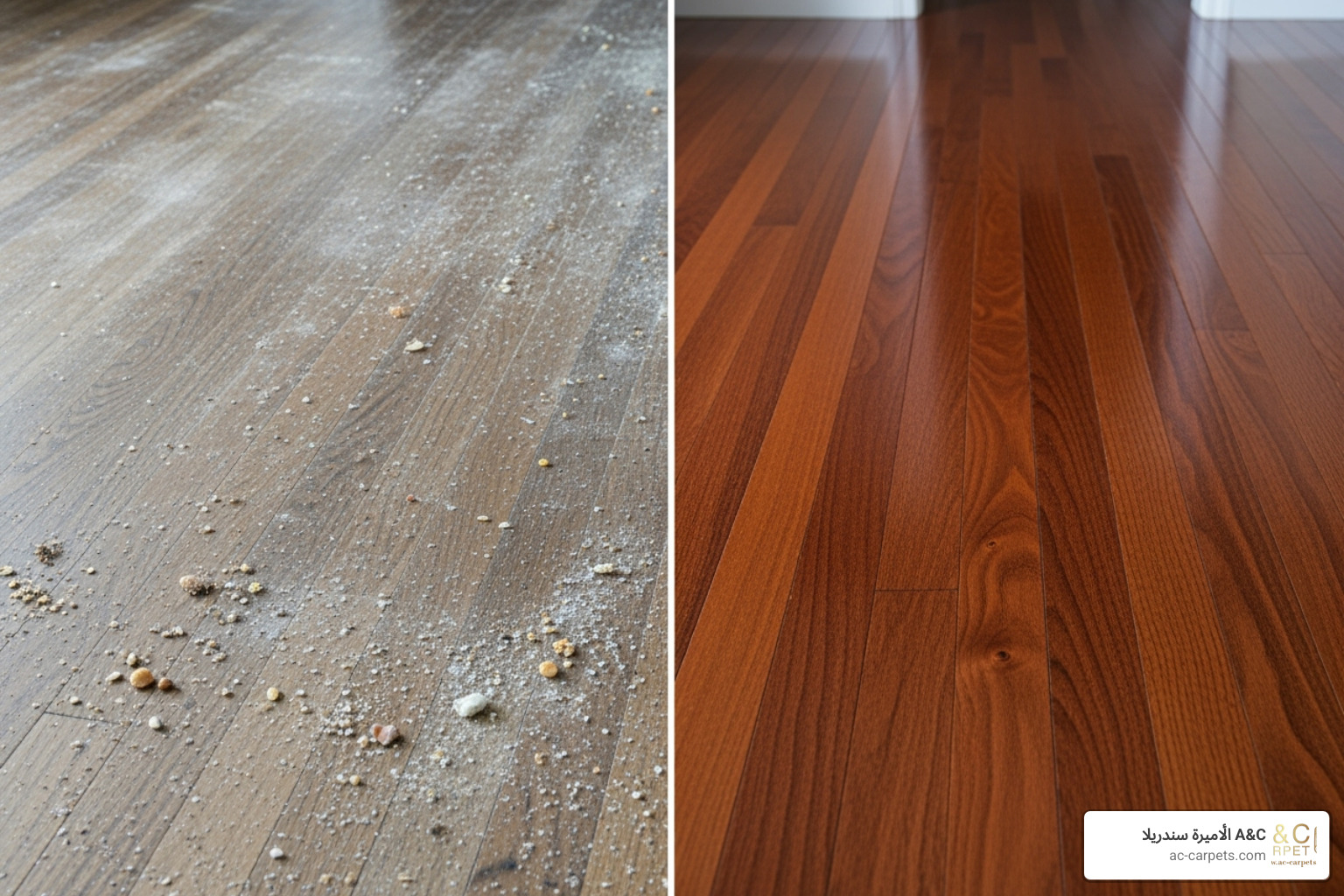
Many people use the terms ‘cleaning’ and ‘disinfecting’ interchangeably, but for hardwood floors, understanding the difference is key to proper care and longevity.
Cleaning is the physical removal of visible dirt, dust, and grime. When you sweep or mop, you’re tidying up the mess you can see.
Disinfecting uses chemicals to kill invisible germs, bacteria, and viruses. Quality disinfectants can kill 99.9% of common germs like staph, salmonella, and E. coli.
The best way to clean and disinfect hardwood floors starts with knowing when each is needed. For your everyday routine, simple cleaning is highly effective. The CDC has found that regular cleaning is quite effective for general household maintenance.
Disinfection provides extra protection in specific situations:
- When someone’s been sick with the flu or a stomach bug, disinfecting helps prevent germs from spreading.
- High-traffic areas like entryways and kitchens benefit from occasional disinfecting, especially during cold and flu season.
- Pet accidents call for disinfection to eliminate bacteria.
- Specific health concerns or illness outbreaks may warrant targeted disinfection for peace of mind.
What Are the Best and Worst Cleaners for Hardwood?
Using the wrong cleaner can be disastrous for hardwood. Here’s what to use and what to avoid.
Best Cleaners for Hardwood:
- pH-Neutral Cleaners: These gentle formulas clean effectively without stripping the protective finish. They are specifically designed for wood and won’t leave a sticky residue.
- Water-Based Commercial Hardwood Cleaners: Many modern formulas are biodegradable and safe for families and pets.
- Wood-Safe Disinfectants: When you need to disinfect, read labels carefully to find products specifically marked as safe for sealed hardwood floors.
Cleaners to Avoid:
- Ammonia-Based Cleaners: These strip the floor’s finish and leave a cloudy haze.
- Bleach: It can discolor wood and break down protective sealants. Learn more about using bleach safely on floors to understand the risks.
- Oil Soaps: They leave a greasy, slippery film that builds up and dulls the floor.
- Abrasive Cleaners: These will scratch your finish.
- Steam Mops: The combination of high heat and moisture can warp hardwood.
- Excessive Water: Wood and water don’t mix. Too much moisture causes swelling and permanent damage.
- Vinegar and Water: The acid in vinegar gradually breaks down the floor’s protective coating, leaving it vulnerable and lifeless.
The Safe and Effective Way to Clean Hardwood Floors
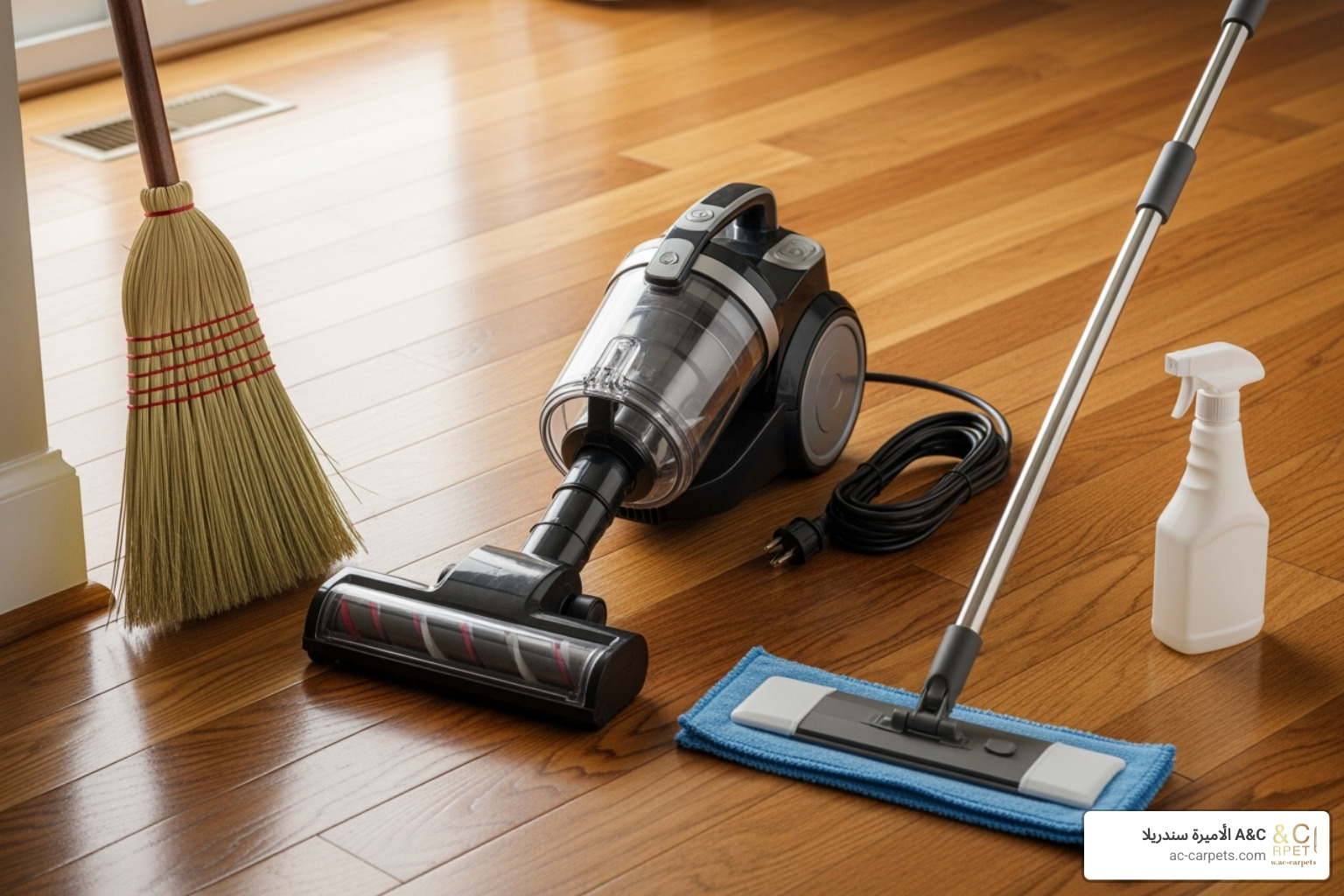
Knowing the best way to clean and disinfect hardwood floors starts with identifying your floor’s finish. Using the wrong method for your finish type can cause expensive, irreversible damage.
Floor Finish Types: Know Your Wood!
Different floor finishes require different cleaning approaches.
- Polyurethane or Urethane: Most common and durable. These sealed floors have a protective coating that resists moisture and can handle most pH-neutral cleaners.
- Waxed Floors: These have a soft, natural finish that requires special care. Water and conventional cleaners will strip the protective wax.
- Oiled Floors: Treated with penetrating oils for a matte finish, these floors need specialized oil-based cleaners.
- Unsealed or Unfinished Floors: These are highly absorbent and vulnerable to stains and water damage. Most liquid cleaners are off-limits.
Pro Tip: To identify your finish, do the water test. Place a small drop of water in an inconspicuous spot. If it beads up, your floor is sealed. If it soaks in, it’s unsealed and needs special care.
Step 1: Prepare the Floor
Proper preparation prevents you from accidentally scratching your floors with trapped debris.
First, remove furniture and rugs. Then, dry mop or vacuum with a soft-bristle attachment. This critical step removes loose dirt, dust, and pet hair. If using a vacuum, ensure it’s on a hard floor setting without an aggressive beater bar. A microfiber dust mop is also excellent, as its electrostatic properties attract dust.
Step 2: Damp-Mop for a Streak-Free Shine
This is the heart of the cleaning process. Your secret weapon is a microfiber mop, which lifts dirt effectively and gives you better control over moisture.
Mix your pH-neutral cleaner according to the package directions. The most common mistake is using too much water. Your mop should be barely damp, not dripping. Wring it out thoroughly until it’s just moist to the touch. Excess water can cause warping and permanent damage.
Always mop with the grain of the wood to prevent streaking. Work in small, manageable sections (about 4×4 feet) to control moisture levels. For a perfect finish, go over each cleaned section immediately with a clean, dry microfiber cloth to remove any lingering moisture and buff the floor to a streak-free shine.
At الأميرة سندريلا A&C, we understand that proper maintenance protects your flooring investment, creating spaces that are both beautiful and practical.
The Best Way to Clean and Disinfect Hardwood Floors Without Damage
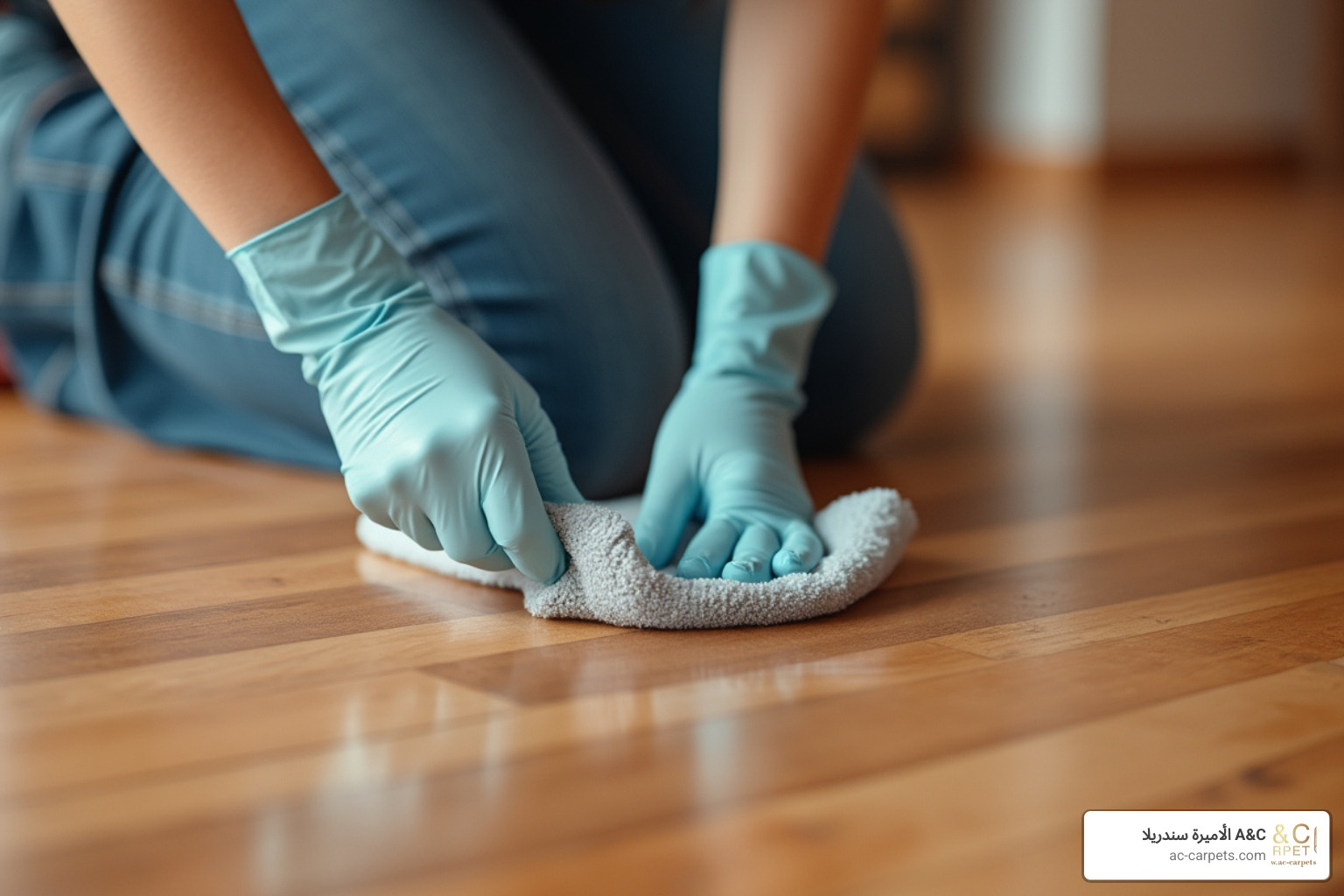
Disinfecting hardwood requires a delicate balance between killing germs and protecting your floor. The best way to clean and disinfect hardwood floors is to understand this balance to avoid costly mistakes.
The Hidden Dangers of Getting It Wrong
Improper disinfecting can cause permanent damage. The primary risks include:
- Moisture Damage: Excess liquid can cause wood to swell, warp, or cup.
- Finish Stripping: Harsh chemicals can dissolve the floor’s protective coating.
- Discoloration: Bleach and other unapproved chemicals can leave permanent stains.
Choosing Your Disinfectant Wisely
The golden rule: if the label doesn’t explicitly say it’s safe for sealed hardwood floors, don’t use it. Look for pH-neutral disinfectants that won’t attack your floor’s finish. Products like Clorox® Scentiva® Disinfecting Wet Mopping Cloths are formulated to be wood-safe and bleach-free, killing 99.9% of germs like staph, salmonella, and E. coli without damaging floors. Avoid DIY solutions like vinegar and water, as vinegar’s acidity can slowly eat away at your floor’s finish.
The Spot Test: Your Safety Net
Before disinfecting the entire floor, always perform a spot test in an inconspicuous area, like inside a closet or under furniture. Apply the product as intended, wait the recommended time, and wipe it away. Check back in 24 hours for any discoloration, dullness, or sticky residue. If the area looks perfect, you can proceed.
Step-by-Step: The best way to clean and disinfect hardwood floors
Precision and patience are key to getting this right.
-
Clean First: This is not optional. Disinfectants need direct contact with germs to work. Dirt and grime act as a shield, making disinfection ineffective. Follow the complete cleaning steps before proceeding.
-
Apply Disinfectant to a Cloth: Never spray disinfectant directly onto the floor. This prevents oversaturation and puddles. Instead, spray your wood-safe disinfectant onto a clean microfiber cloth until it’s damp but not dripping.
-
Respect the Dwell Time: Every disinfectant has a specific contact time on its label (e.g., 4-10 minutes) required to kill germs. The surface must remain visibly wet for this entire period. If it dries too soon, reapply with your damp cloth. Ignoring the dwell time renders the product ineffective.
-
Dry Immediately: After the dwell time has passed, use a clean, dry microfiber cloth to wipe away all remaining moisture. This final step prevents water damage and ensures a streak-free finish.
For specific guidance on using bleach safely on wood floors, Clorox provides detailed instructions that can help you make informed decisions about their products. The best way to clean and disinfect hardwood floors comes down to respecting both the science of disinfection and the delicate nature of wood.
Maintaining Your Hardwood Floors for Lasting Hygiene
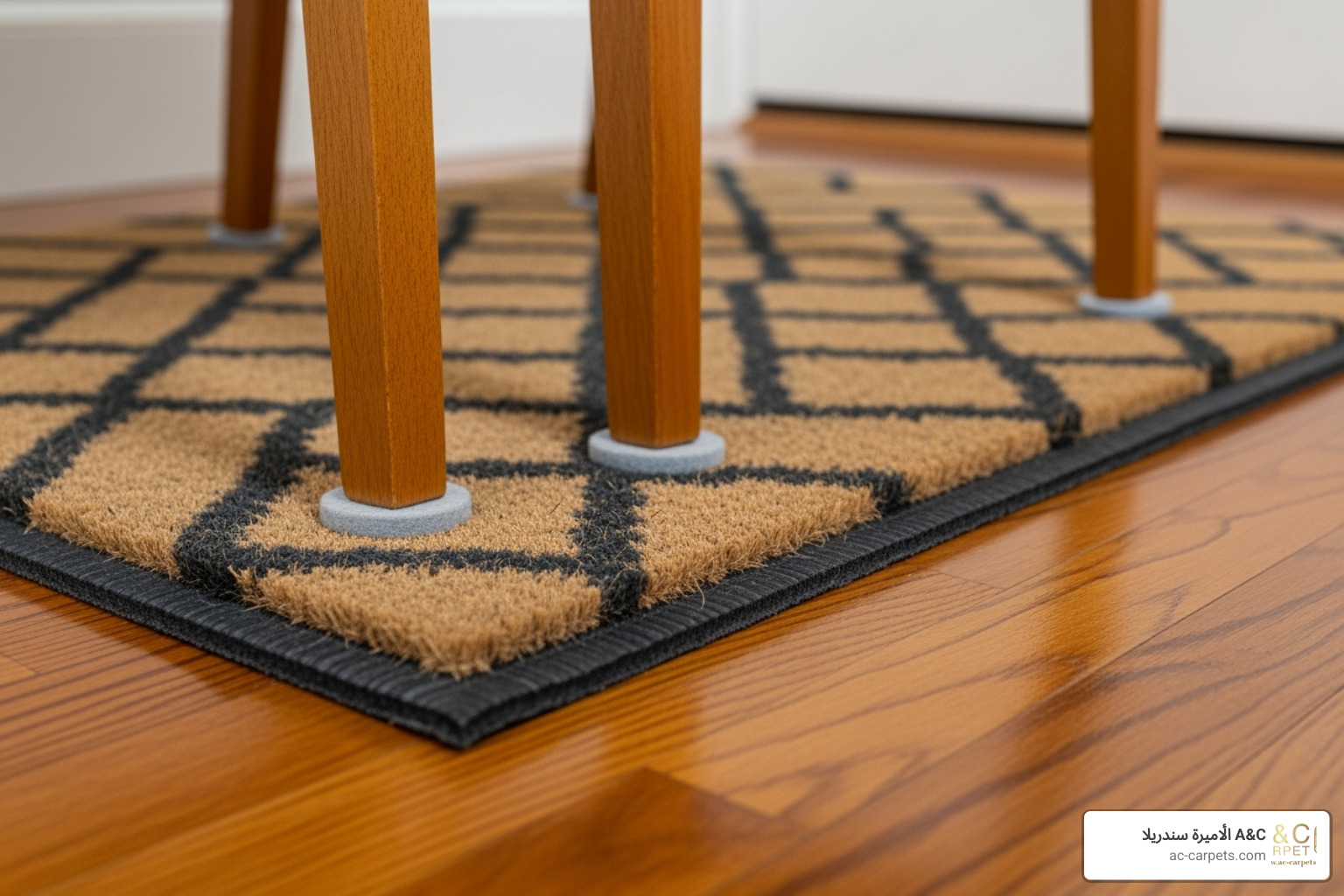
The best way to clean and disinfect hardwood floors involves smart daily habits, not just occasional deep cleans. Consistent, gentle care is more effective than sporadic, intensive efforts and keeps your floors looking great without a demanding schedule.
Cleaning Frequency: Finding Your Sweet Spot
- Daily Sweeping: A quick sweep of high-traffic areas (kitchen, entryway) with a microfiber dust mop takes only a few minutes. It picks up debris before it gets ground into the finish, saving you from more intensive cleaning later.
- Weekly Mopping: A gentle damp-mop with a pH-neutral cleaner removes the week’s accumulated grime. Consistency is more important than intensity. During winter or rainy seasons, you may need to mop twice a week in high-traffic zones.
Disinfecting Frequency: Less is Actually More
For everyday life, the CDC confirms that regular cleaning is usually sufficient. Your floors don’t need a weekly disinfectant treatment.
Save disinfecting for when it truly matters: after an illness, a pet accident, or for specific contamination concerns. This approach is not only easier but also gentler on your floors, as it limits their exposure to stronger chemicals.
Preventative Measures: Your Floor’s Best Friends
The smartest strategy is to stop dirt at the door.
- Doormats: Place a sturdy mat outside and an absorbent one inside to trap dirt and moisture.
- No-Shoes Policy: This is a game-changer for keeping floors clean.
- Felt Furniture Pads: Stick these under all furniture legs to prevent scratches and gouges.
- Immediate Spill Cleanup: Wipe up any spills immediately to prevent water damage or sticky spots that attract dirt.
- Pet Paw Wipes: Keep a towel by the door to wipe your pet’s paws after walks.
These simple habits transform floor care from a dreaded chore into an easy part of daily life, keeping your hardwood healthier and more beautiful with less effort.
Frequently Asked Questions about Cleaning Hardwood Floors
As a flooring expert at الأميرة سندريلا A&C, I frequently answer questions from homeowners on how to care for their floors. Here are the most common ones.
Can I use a steam mop on my hardwood floors?
The answer is a firm no. Steam mops seem convenient, but they combine high heat with excessive moisture. This combination forces steam into the wood’s grain and seams, even on sealed floors. Over time, this leads to irreversible damage like warping, cupping, and finish deterioration.
The best way to clean and disinfect hardwood floors is always with controlled moisture. Stick to a well-wrung damp mop and a proper cleaner to protect your investment.
Is a vinegar and water solution safe for all hardwood floors?
While it’s a popular DIY cleaner, vinegar is not recommended for hardwood floors. Vinegar is acidic. Even when diluted, its acid slowly breaks down the protective polyurethane finish on your floors. You may not notice it at first, but over time, the finish will become dull, hazy, and etched.
A pH-neutral cleaner specifically formulated for hardwood is always the safer and more effective choice. It cleans without compromising the floor’s protective coating, which is a small price to pay for protecting your flooring investment.
How do I know if my hardwood floors are sealed?
Knowing your floor’s finish is crucial because it determines the entire cleaning process. Fortunately, there’s a simple test.
Find an inconspicuous spot (e.g., inside a closet or under a rug) and place a single drop of water on the wood.
- If the water beads up and stays on the surface, your floor is sealed. You can safely use the cleaning and disinfecting methods discussed in this article.
- If the water soaks in and leaves a dark spot, your floor is unsealed or the finish is worn. These floors are highly vulnerable to damage and require special care, avoiding most liquid cleaners.
This quick test can save you from making a costly mistake.
Conclusion
Caring for your hardwood floors is a simple routine that protects your family’s health and your home’s beauty. The best way to clean and disinfect hardwood floors is about understanding when each step is needed.
For daily care, a quick sweep and weekly damp-mop with a pH-neutral cleaner are sufficient. Reserve disinfecting for specific situations, like after an illness. When you do disinfect, remember the golden rules: use wood-safe products, apply them to a cloth (not the floor), respect the dwell time, and dry the floor promptly. Avoid harsh chemicals like bleach and vinegar, which can damage your floor’s finish over time.
Preventative habits are the secret to beautiful hardwood floors. Doormats, furniture pads, and a no-shoes policy prevent more damage than any cleaning routine can fix.
Your hardwood floors are an investment in your home’s beauty and value. With the right care, they will bring warmth and elegance to your space for decades.
At الأميرة سندريلا A&C, we believe great floors are the foundation of a beautiful, low-maintenance home. Our Egyptian factory creates innovative flooring solutions that blend contemporary design with practical durability, perfect for modern families and businesses.
Whether you’re planning a new installation or upgrading your current flooring, we’d love to show you how our modern carpet alternatives and flooring solutions can transform your space. Explore our modern flooring solutions and find the difference quality Egyptian craftsmanship can make in your home, office, or hotel project.
